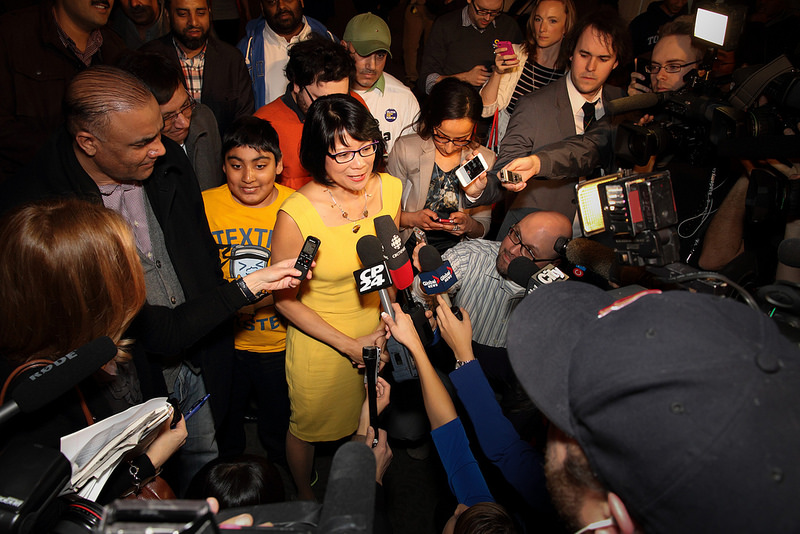
Image: Olivia Chow / Flickr
How your organization handles communications in an unexpected situation can have major implications for your coalition's reputation, brand, and advocacy.
Take WABA as an example. Earlier this year, Washington Post columnist Courtland Milloy penned an article that was highly critical of bicycle transportation in the DC area. He went so far as to condone striking a bicyclist with a car. In reponse, the Washington Area Bicyclist Association snapped into action. They responded with a blog post and an email to supporters, taking a hard line against any endorsement of violence against vulnerable road users.
On a recent Alliance webinar, two leading advocates and a public relations expert shared their advice for crisis communications and rapid response.
Kristin Smith, Communications Director with the San Francisco Bicycle Coalition, explained how events unfolded after a tragic and shocking crash in 2012. On a sunny afternoon, an athletic bicyclist hit and killed 71-year-old Sutchi Hui in a crosswalk. Almost immediately, the Bicycle Coalition was inundated with media attention. Kristin noted that this type of media response is a peculiar reality of bicycle advocacy: bike advocates are asked to answer for everyone who bikes, while driver associations like AAA are almost never asked to comment on reckless drivers' behavior.
With no crisis communications plan in place, advocates responded on the fly with a simple statement and minimal media response. Their message was clear: the Bicycle Coalition denounces reckless behavior of any sort. Two days later, the organization held an on-street action to hand out safety materials and encourage bicyclists to ride safely, which includes always yielding to pedestrians.
Having a crisis communications plan is a must for your organization, said Sarah Shipley, co-founder of BikeWalkKC and principal with Shipley Communications. She suggests creating a plan on a drama-free day when you have a clear head.
Start with a scenario. What are the worst possible situations that could happen? Then, make a plan for how your organization will respond. Who's first on the scene? What is your response?
Advocates can find Sarah's worksheets for developing a crisis communications plan in the Resouce Library (requires member login).
But rapid response communications doesn't just apply when your organization is forced to be reactive. Your organization can also create opportunities for public conversations on your issue by responding to news items that are timely and relevant. Molly Haigh, Senior Media Director with FitzGibbon Media, recommends defining your media goals and jumping in during the media moments with your issue is most clear.
UltraViolet, a women's rights organization, provides a valuable example outside of the transportation world. To draw attention to rape culture in the United States, UltraViolet launches targeted campaigns when sexual assault comes up in the media. For example, after Rick Ross recorded a lyric that condoned drugging and raping women, the organization campaigned Reebok to drop its sponsorship for Ross. The campaign was highly public and targeted, helping the organization proactively draw attention to the issue.
For more detail on the webinar, check out the video recording below. If your organization is a member of the Alliance, you can also see full notes from the webinar in the Alliance Resource Library.

